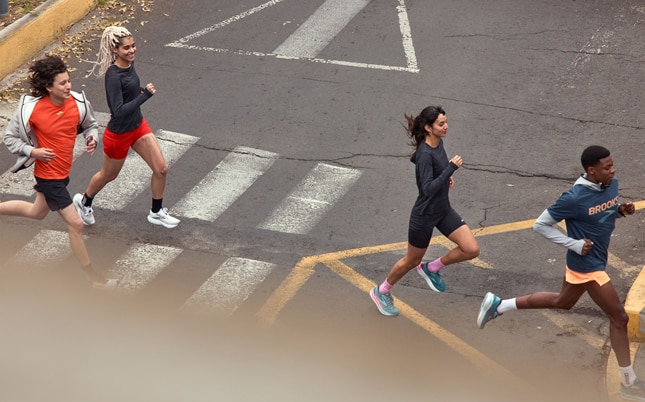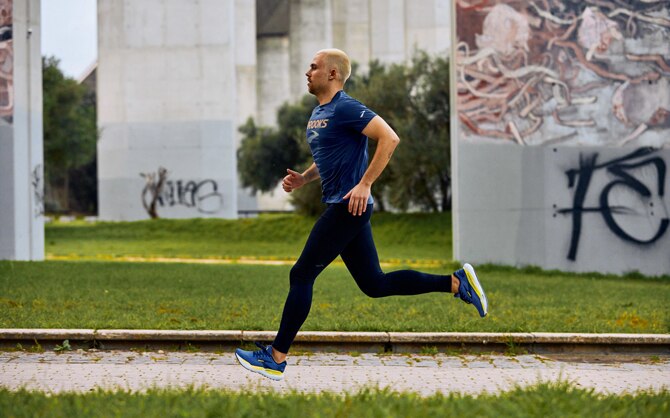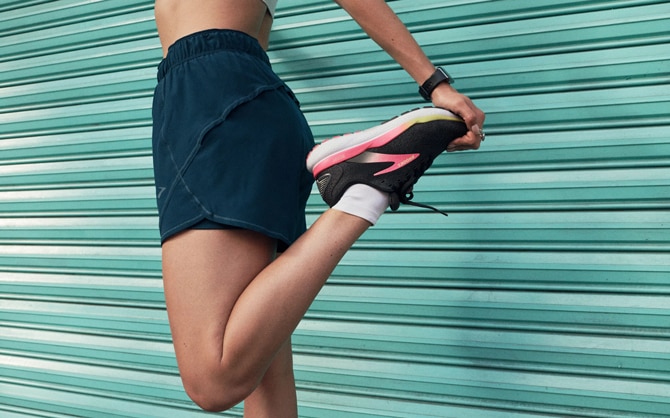What to look for in long-distance running shoes

So, you've caught the running bug and you're in it for the long haul (literally). But the more miles you begin to run, the more important it becomes to make sure you're doing what you can to stay healthy and comfortable. Let's dive into some things to look for when considering long-distance running shoes.
There are many running shoes to choose from. Road or trail running shoes, trainers or racing flats, max cushion to low profile, motion control to neutral shoes, and more. It can be a bit daunting when determining what shoes will be best for your specific needs. When getting into long-distance running, though, there are some key features to consider for your next pair of shoes.
Consider where you're running
It's important to consider where most of your time will be spent logging your miles. Do you intend to hit the local trails for the majority of your runs or do you plan to run the roads in the neighborhood or log miles on the treadmill at the gym?
If it's the former, you'll likely be better off in a trail running shoe designed for traversing roots, rocks, and mud with a more tacky, lugged outsole and a rock plate designed to disperse the impact of stepping on a sharp object. More so, if you're logging longer miles on the trail, it's worth considering a trail running shoe with a bit more cushion throughout the midsole.
If you're running on the road or treadmill, you'll be much more comfortable with road running shoes. Long-distance running shoes designed for the road commonly have an outsole designed to take a beating and last longer.

Cushion or support?
Anyone can figure out that running longer miles requires you to spend more time on your feet. More time on your feet is obviously more stress on your body. So does it make sense to purchase a shoe with more cushion, more support or maybe a bit of both?
The simple answer is a bit of both.
Undoubtedly, more supportive, cushioned shoes will give you the lowest risk for injury during higher mileage running or training. There are a number of shoes with a good amount of both cushion and support, but there's a caveat here, as each individual will respond differently to max cushion, arch support, etc. Furthermore, support is commonly associated with arch support, but there are other key features in running shoes that will help to support you for a longer time on your feet. Most notably, with premium, long-distance running shoes, you'll find they are more rigid than regular running shoes. This allows for the shoe to take more of the stress and require less from your feet from the heel to toe transition in every step.
I highly recommend going to see a specialist at a running store, physical therapist, or podiatrist, using the shoe finder, or doing your own research to determine what type of shoe (stability or neutral cushion) will be best for you.
Cushion
In the last decade, we've seen shoes with minimal support and cushion gain some traction in the running industry. And more recently, max cushion shoes have gained a lot of popularity across running brands. Undoubtedly, if you're racking up miles week after week, a shoe with cushion is going to help disperse some of the stress and keep you running happy and healthy. Determining just how much cushion you prefer will require you to spend some time in the shoes.
If you're someone who needs a neutral cushion shoe, there are a number of great options that will give you varying amounts of cushion. We've listed a couple just below that come highly rated:
- The workhorse neutral shoe of the Brooks brand, the Ghost offers soft, nitrogen-infused DNA LOFT v3 cushioning and smooth transitions for your longer miles.
- If you're looking for a little more cushion underfoot, look no further than the Glycerin. This shoe offers the ultimate ride in softness, with 2mm more nitrogen-infused DNA LOFT v3 cushioning.

Support
If you're someone who needs a little more support in the way of a stability shoe, fear not. There are several options within the stability category that will not only offer support, but are also designed with some cushioning when you're craving a little more softness underfoot.
-
One of the more legendary shoes in the running industry over the last 20 years, in my opinion, is the Adrenaline GTS. It is the perfect balance of comfort and support, combining soft cushioning with GuideRail tech.
-
If you're someone who needs maximum support without skimping on a softer ride on the road, the Addiction GTS could be your go-to shoe.
Lastly, I highly recommend sticking to a shoe designed for longer distances during your higher mileage runs and training cycles. Keep those lightweight, springy shoes in reserve for your race days.
Once you've found the right shoes for you, it's time to lace up and log some miles!
Our writer's advice is intended for informational or general educational purposes only. We always encourage you to speak with your physician or healthcare provider before making any adjustments to your running, nutrition, or fitness routines.

